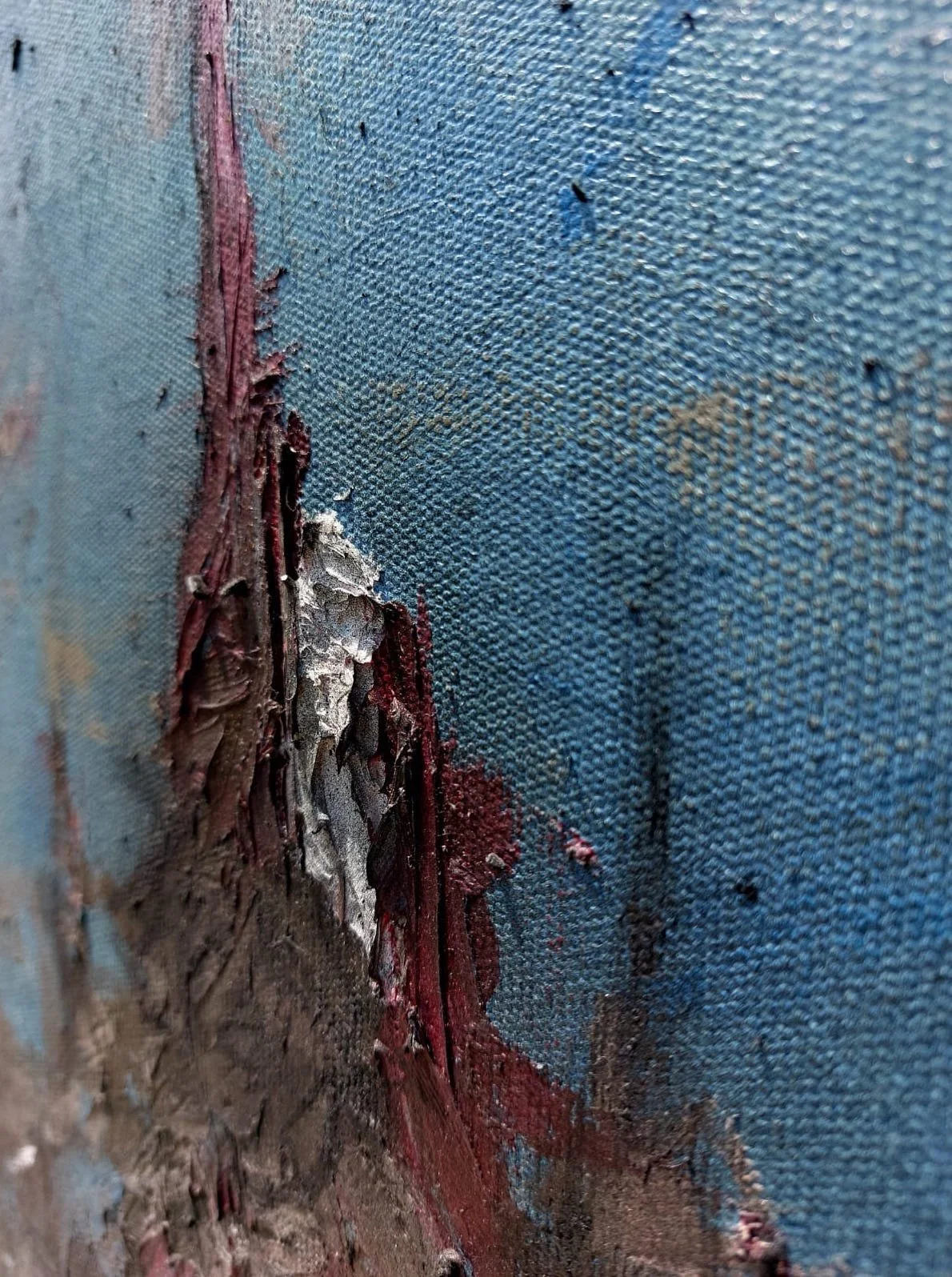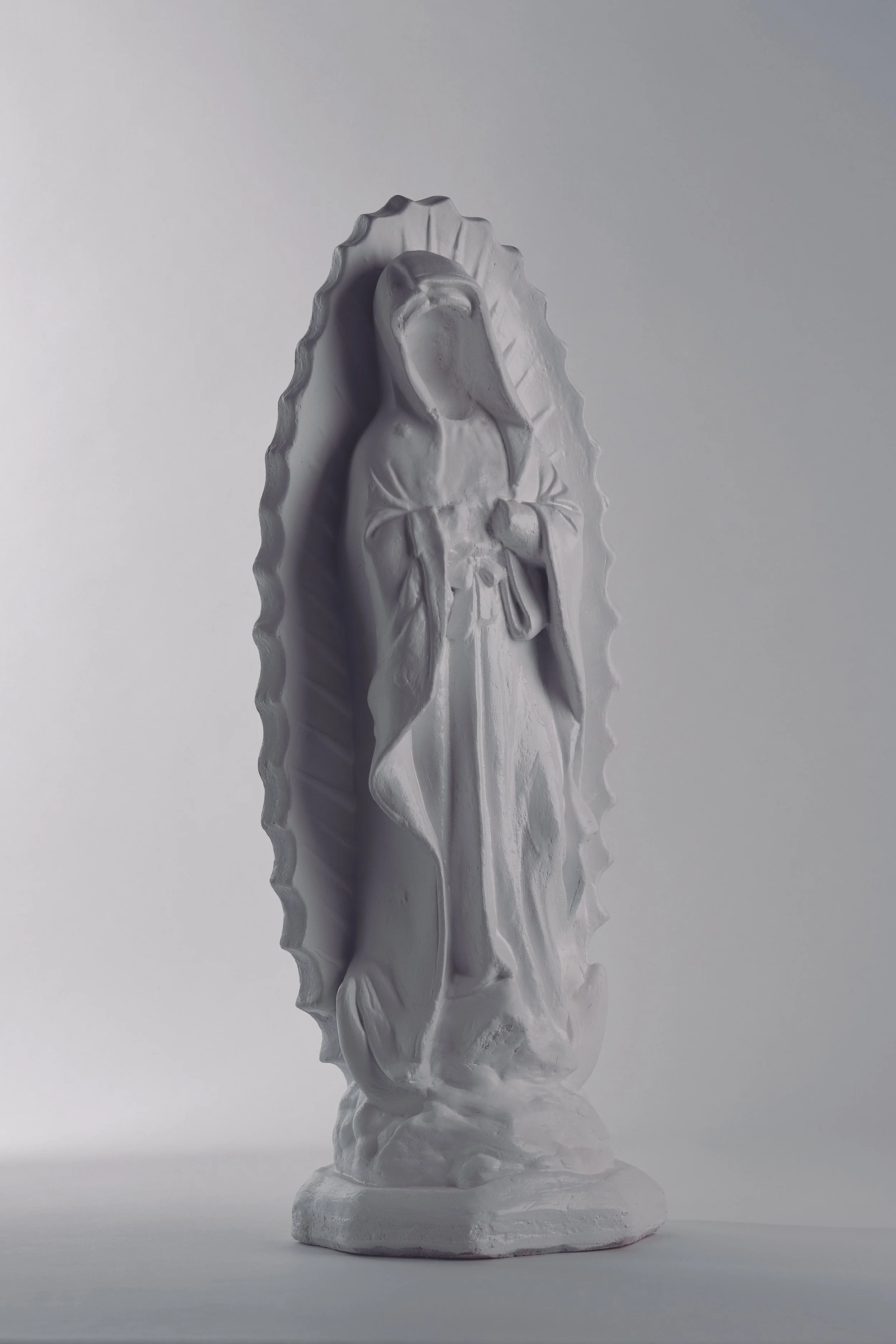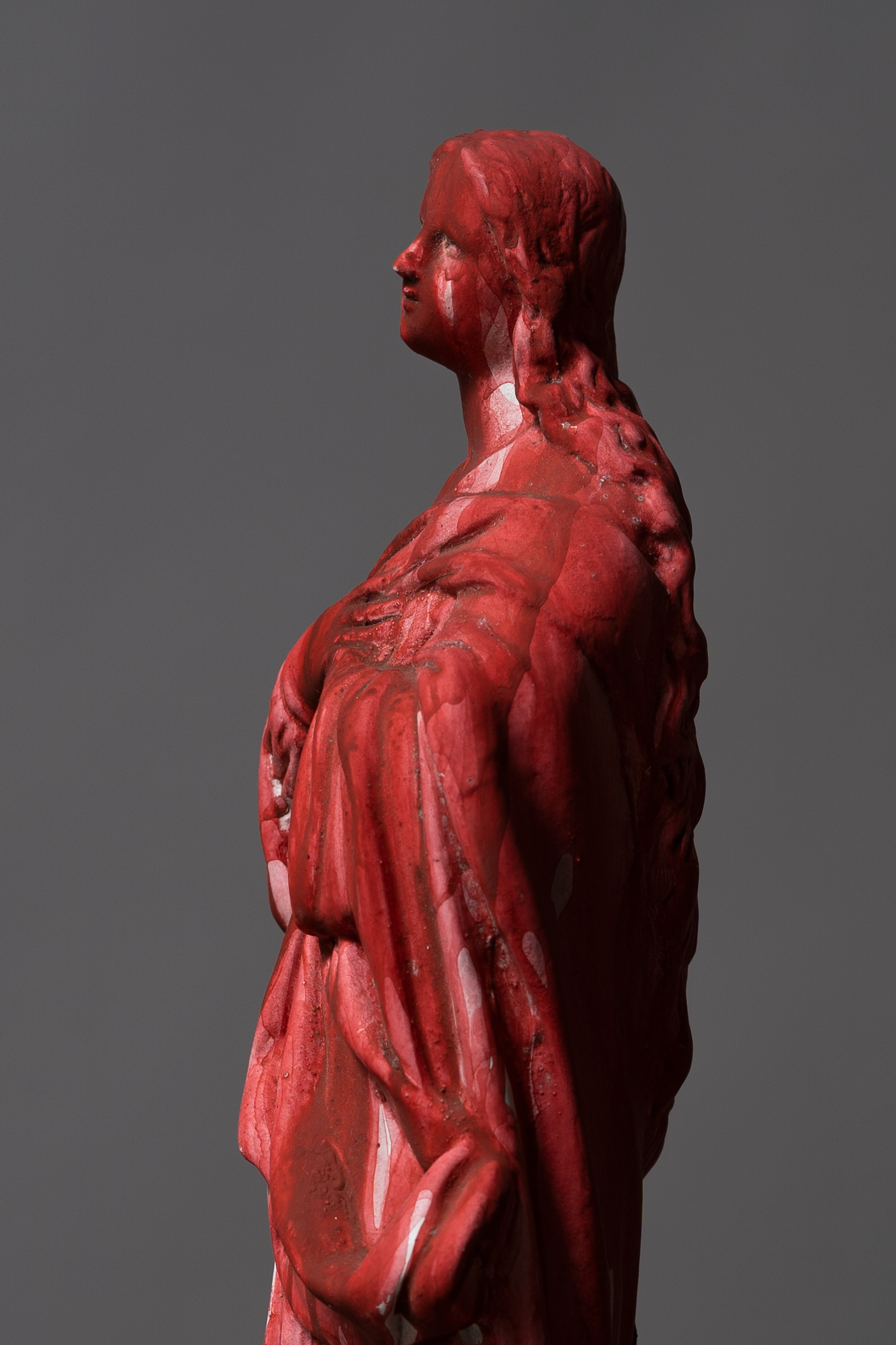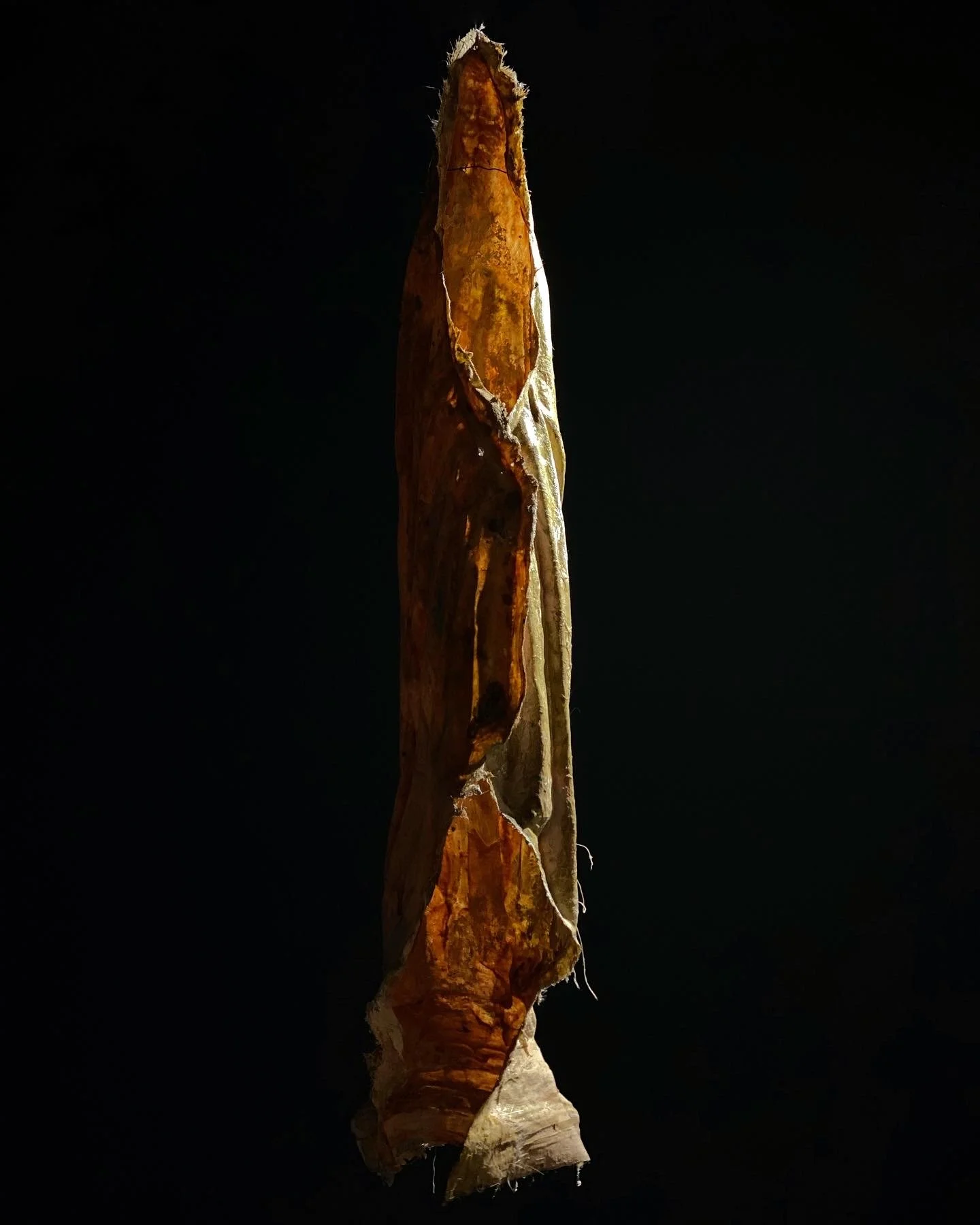NATALIA DOCUMET
Natalia Documet Elaluf is a multidisciplinary visual artist whose practice moves fluidly between painting, sculpture, site-specific installation, and public intervention. Her work begins from personal introspection to examine the psychological dimensions of human behaviour in dialogue with broader social contexts shaped by violence, religious indoctrination, and the politics of mental health.
She studied Contemporary Visual Arts at Corriente Alterna in Lima, was mentored in writing by poet and essayist Maurizio Medo, and trained in Sound Engineering at CT Audio. Her research-based practice draws from an anthropological lens, merging archives, recycled materials, and alternative supports to forge intersections between art, activism, and new media.
In 2023, she received the Economic Stimulus for Visual Arts from Peru’s Ministry of Culture for her project Ausencias, and completed a residency at Uberbau House in São Paulo. Her upcoming solo exhibition, La herida es el lugar por donde entra la luz (ICPNA, 2025), continues her investigation into collective memory and emotional repair.
She has presented solo exhibitions including Ausencias (Laboaleatorio Espacio, 2022) and Inmaculadas (Espacio La Sala, 2019), and participated in group shows at institutions such as the Lugar de la Memoria (LUM), Proyecto Trakl, Fisura Galería, and LAC Galería, among others.
Alongside her studio practice, Documet is co-founder of Proyecto Trakl and Fisura Galería, two independent platforms that foster experimental and collaborative artistic discourse in Lima. Her work is held in private collections including those of Carlos Marsano, Eduardo Hochschild, and Ignacio Bustamante, as well as in the collection of the Instituto Cultural Peruano Norteamericano (ICPNA).
She has presented solo exhibitions including Ausencias (Laboaleatorio Espacio, 2022) and Inmaculadas (Espacio La Sala, 2019), and participated in group shows at institutions such as the Lugar de la Memoria (LUM), Proyecto Trakl, Fisura Galería, and LAC Galería, among others.
Alongside her studio practice, Documet is co-founder of Proyecto Trakl and Fisura Galería, two independent platforms that foster experimental and collaborative artistic discourse in Lima. Her work is held in private collections including those of Carlos Marsano, Eduardo Hochschild, and Ignacio Bustamante, as well as in the collection of the Instituto Cultural Peruano Norteamericano (ICPNA).
SELECTED SERIES
Monuments for Destruction (2022–ongoing)
“Monumentos para la destrucción” continues Documet’s exploration of collective trauma, gendered violence, and social hypocrisy through acts of symbolic defiance. The series confronts the precarious condition of womanhood within the Peruvian social landscape, particularly in Lima, where the threat to physical, psychological, and sexual safety is pervasive.
Using architectural models of institutions such as the Congress, the Palace of Justice, the Ministry of Health, and the Cathedral of Lima, Documet stages their gradual destruction as a performative gesture. These “monuments” are both structures of power and sites of systemic failure, representing the very entities that have perpetuated injustice and eroded public trust. Through this process of erosion, she constructs a psychological landscape that makes visible the fractures within an idealized social order. Each act of impact, cutting, striking, or collapsing, becomes a cathartic translation of collective frustration, grief, and resistance.
Natalia Documet, Consecuencia, 2021 Mixed media on MDF, 37 x 84.25 in

Detail: Natalia Documet, Ensayos de un Estado, 2021, Mixed media on canvas, 47.25 × 47.25 in
Natalia Documet, Ensayos de un Estado 2021, Mixed media on canvas, 47.25 × 47.25 in
Natalia Documet, Cuasantes, 2021, Mixed media on MDF, 47.25 × 39.37 in
Natalia Documet, Tribunal Constitucional 2021, Mixed media on MDF, 35.43 × 47.25 in

Detail: Natalia Documet, Tribunal Constitucional 2021, Mixed media on MDF, 35.43 × 47.25 in
Absences (2023–ongoing)
“Ausencias” examines the entanglement of religion, power, and the historical conditioning of women’s identities in Peru. Although the country is constitutionally secular, religious influence continues to shape its social and moral frameworks. Drawing from the visual language of Catholic iconography, Documet removes the faces from traditional depictions of saints and virgins, figures long used as tools of moral comparison and submission.
By hollowing out these once-sacred images, she exposes the absence of individuality behind ideals of purity and devotion imposed on women for centuries. The resulting forms, empty vessels devoid of expression, evoke both silence and emancipation. Developed through the study of six female saints and blesseds, the project becomes an inquiry into how inherited iconography continues to define, constrain, and justify gendered hierarchies.




























